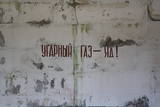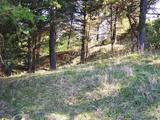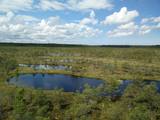| Nr | Nosaukums | Apraksts |
|---|---|---|
|
Raiskumā pie ezera, bijušās muižas klēts ēkā atrodas SIA ''Raiskuma labumu darītava’’, kurā top maize un alus. Malkas krāsnī tiek cepta dabīgā ierauga rupjmaize un sadskābmaize pēc senām receptēm, kas mantotas no iepriekšējām paaudzēm. Izmantoti tiek tikai dabīgi produkti - rudzu un kviešu milti. Arī alus tiek darināts pēc senām receptēm - gan gaišais, gan tumšais alus ''Raiskumietis''. To gatavojot, izmantots tīrs ūdens no Gaujas nacionālā parka, miežu iesals, apiņi un raugs. Patieso garšu dod ar malku kurināms vārāmais katls. Tiek piedāvātas arī ekskursijas - degustācijas. |
||
|
No Ežezera iztekošā Narūtas upīte ~ 1 km ieplūst nelielajā Obiteļu dzirnavezerā. Narūtas labajā krastā atrodas ap 1900. gadu celtās dzirnavas, kurās izveidota atpūtas bāze „Obiteļa" ar pirti un banketa zāli. |
||
|
Staldzenes Zenītraķešu brigādes divizions izvietots plašā teritorijā ar skaita un izmēra ziņā apjomīgu ēku kompleksu. Daļa no celtnēm tiek privāti apsaimniekota, it kā ierīkota zivju kūpinātava. Pārējās ēkas ir pamestas, izmantotas būvmateriālu ieguvei un nedrošas.
|
||
|
Iespaidīgs pilskalns ar izveidotu apskates taku. Blakus ūdenstūristu apmetne „Kvēpene”.
|
||
|
Atraktīvais amatnieks ir viens no "Pūdnīku skūlas" podniekiem, kas izmanto senču uzkrātās zināšanas. Darbnīcā "Malny Wylky" var redzēt tradicionālo darbu tapšanas procesu no virpošanas ar kājminamo virpu līdz to apdedzināšanas bedres tipa malkas ceplī svēpējuma tehnikā. Darbu apskate un iegāde. Vēsma Ušpele savukārt glezno eļļas tehnikā un parādīs savus darbus. |
||
|
Mācību darbnīcas un mājas kafejnīcas ir izplatītas visā Igaunijā, taču pārsvarā tās sastopamas Peipsimaa reģionā. Darbnīcu laikā dalībnieki ar vadītāja palīdzību pagatavo 3–4 ēdienus, ko pēc tam kopīgi nobauda. Uzsvars tiek likts uz Peipsimaa apkārtnē sastopamajiem produktiem un iecienītajām receptēm. Mācību darbnīcas galvenokārt notiek āra apstākļos, kur kurina ugunskuru, grilu, izmantojot katlu un samovāru. Ziemā darbnīcas notiek pat uz Peipusa ezera ledus. |
||
|
Ķeguma hidroelektrostacija – sākums mērķtiecīgi iecerētai valsts vienotai elektroapgādei. Ķeguma HES ir lielākā un modernākā hidrotehniskā būve Baltijas reģionā 20. gadsimta 1. pusē. Tās celtniecībā (1936 – 1939) strādā vairāk nekā 4000 Latvijas iedzīvotāju. Pirmo hidroagregātu iedarbina 1939. gada 15. oktobrī un ieslēdz elektrolīniju Ķegums-Rīga. Projektā paredzēti četri hidroagregāti ar kopējo jaudu 70 MW. No 1975. gada līdz 1979. gadam norit Ķeguma HES paplašināšana, tiek izbūvēta jaunu ražotne – Ķeguma HES-2 Daugavas kreisajā krastā. Stacijas jauda palielinās līdz 260 MW. Enerģētikas muzejs atrodas Daugavas kreisajā krastā Ķeguma HES teritorijā. Muzejā ikviens interesents – no zinātkāra bērna līdz nozares ekspertam – var smelties jaunas zināšanas par Latvijas enerģētikas vēsturi un attīstību. Muzeja darba laiks: otrd. - piekt. 9.00 – 15.00; sest. 9.00 - 17.00 Lūdzam pieteikties vismaz 2 dienas pirms plānotā apmeklējuma! |
||
|
Tikai 30 minūšu braucienā no Rīgas, pašā Ogres centrā atrodas "SierŠtelles" ražotne. Turpat atpūtas kompleksā „Policijas akadēmija” var nobaudīt "SierŠtelles" siera ēdienus, kā arī iegadāties sierus kulinārijā. „SierŠtelles” sortiments sastāv no 31 dažādas garšas siera – gan sāļajiem, gan saldajiem. Īpašā siera recepte dzimusi turpat Ogrē, populārajā Peldu kūrortā. |
||
|
Nepilnus 3 km garā taka iepazīstina ar dziļo Imulas ieleju – Abavas kreisā krasta pieteku. Īpaši iespaidīga ieleja izskatās bezlapu periodā, kad ir apjaušami tās izmēri un formas. Viens no takas iespaidīgākajiem objektiem ir Buses jeb Matkules pilskalns. Apskatāmi citi objekti – Baznīckalns, Bedrīšakmens, Ķauķa kalns ar avotiņu. Atrodas dabas parkā „Abavas senleja”. |
||
|
36 ha lielajos saimniecības laukos Latvijas – Baltkrievijas pierobežā ganās gotiņas, no kurām gada laikā iegūst ap 10 t piena, kas tiek pārstrādātas uz vietas. Piedāvā biezpienu, krējumu, dažādu siera veidu šķirnes, mājas saldējuma un gaļas izstrādājumu iegādi un degustāciju. Iespējama līdzdarbošanās. Latgales kulinārā mantojuma tīkla dalībnieks. Bioloģiskā saimniecība. |
||
|
Micānu - Kirkas kalns. Mazā pils Priežukalnā (Kirkas kalnā) 1792. gadā
tika pārveidota par luterāņu baznīcu. Tādēļ šo kalnu arī šodien sauc
par Kirkas kalnu (tulkojumā no vācu valodas – Baznīcas kalns). Vecie
ļaudis ir stāstījuši, ka zem baznīcas esot izbūvēts liels pagrabs, kurā
glabājušās baznīcas un Manteifeļu dzimtas dārglietas, kā arī pagrabā
atrodas Manteifeļu dzimtas kapenes.
|
||
|
„Skaļā klusuma mājā“, kura atrodas senās Nevežas gravas nogāzē, tiek gatavots „laimīgais ēdiens” no visa, kas tiek audzēts saimniecībā. |
||
|
Grobiņas mūra pili 1348. gadā cēlis ordeņmestrs Goswin von Herike. Grobiņas pils izmantota kā fogta rezidence, pilsnovada administratīvais centrs, svarīgs ordeņa atbalsta punkts, kā arī ordeņa sūtītu ceļotāju naktsmītne, braucot no Livonijas uz Prūsiju. Pils laika gaitā uzlabota un pārbūvēta. 17.gs. vidū veikta vērienīga pils pārbūve un ārējo nocietinājumu pārveidošana, uzberot zemes vaļņus ar četriem stūru bastioniem. 18.gs. pils celtnes vairs netika labotas, tomēr līdz pat Kurzemes un Zemgales hercogistes likvidēšanai pils dažās telpās vēl atradās Grobiņas apriņķa administratīvās iestādes, gadsimta beigās vairs netika apdzīvota, un tā pārvērtās drupās. Līdz mūsdienām saglabājušies viduslaiku mūri, 17. gadsimtā veidotie nocietinājumu bastioni un aizsarggrāvji, kā arī stāvinātās nogāzes. 2019.gadā pilsdrupas Ālandes upes atpūtas parka projekta ietvaros izbūvēta skatuve un skatu platforma virs pilsdrupām, rietumu nogāzē izbūvētas lielas kāpnes. Ap pilskalnu arī labiekārtota pastaigu taka, kura vijas cauri pilsētai gar Ālandes upi. Viduslaiku pilskalnam un takai piekļaujas pilsētas promenāde ar skatu vietām un soliņiem. |
||
|
Dabas liegums veidots ar mežiem apaugušā lielpaugura – Nesaules kalna un tā apkārtnē esošo boreālo un mitro mežu aizsardzībai. Teritorija ir salīdzinoši grūti pieejama un nav labiekārtota apskates nolūkam.
|
||
|
The tour introduces modern day life in rural Latvia, Estonia and Lithuania and includes visits to small farms raising livestock and producing delicious foods, and to ethnographic villages preserving the traditional lifestyle in a contemporary environment. The tour also involves sites of historical and cultural interest. The tour gives a look beyond the usual tourism sites to get to know the three Baltic states more deeply. It starts in the historic Latvian capital, Riga, followed by the Gauja National Park with its castles, manors and walking trails. Climb the tower of medieval Turaida Castle for amazing views over the valley and visit the ancient jewellery master in the castle of the charming town of Cesis. Across the border in Estonia, walk streets with elegant villas at Parnu sea resort before catching a ferry to Saaremma island. Ethnographic Koguva village, ancient churches and windmills are typical of the island, as is an embroidering tradition. Then it's off to Tallinn with its medieval Old Town and to the rocky landscapes of Lahemaa National Park with fishing villages and manors. Try Estonian national dishes at the pub in Altja. Driving back, stop at the university town of Tartu. In Latvia again, visit goat farms and a traditional black bread bakery. Then the tour heads towards the west coast with the cities of Liepaja and, across the border in Lithunaia, Klaipeda. Next is the incredible Curonian Spit. Before Vilnius, take a detour to Grutas Park with its bizarre Soviet statuary. Finish the journey at picturesque Trakai Castle in Lithuania and Rundale Palace in Latvia. |
||
|
Nodarbojas ar lopkopību, augļkopību, dārzeņkopību, piena un gaļas ražošanu un pārstrādi. Dalās siera vārīšanas (uz ugunskura) un siešanas prasmē, cep maizi pēc sentēvu receptēm un piedāvā kāzu svinības latgaliešu garā. Latviešu virtuve: Rudzu maize, 14 dažādu šķirņu sieri, zemnieku zupa, mājas alus ar tā darināšanas demonstrāciju. Īpašais ēdiens: Gulbešnīki ar sēņu mērci. |
||
|
Lai Daugavu iepazītu no cita skatu punkta, no „Liepkalnu maiznīcas” var doties izbraukumā ar vikingu liellaivu „Lāčplēsis”, kas vienlaicīgi var uzņemt 24 cilvēku lielu grupu. Daugava jau izsenis ir bijusi nozīmīgs pārvietošanās koridors ne tikai daudzām augu un dzīvnieku sugām, kas pa to „ienāca” tagadējā Latvijas teritorijā, bet arī cilvēkiem un ciltīm, kas dzīvoja Daugavas un Baltijas jūras krastos. |
||
|
Viesu nams atrodas skaistā, mierīgā vietā pie dīķa, kas ikvienu zvejnieku iepriecinās ar zivju pārpilnību. Viesi tiek izmitināti 120 gadus senā klētī, kurā ir guļamistabas, virtuve un pirts. |
||
|
Pie Rumbiņas ietekas Daugavā (upītes kreisajā krastā iepretim Lielvārdes parkam) redzams Daugavas noskalotāsDievkalna pilskalna (Cepures kalns) nogāzes. Pēc senlietu atradumiem var spriest, ka te laikā no 1. g. t. pr. Kr. līdz 6. - 7. gs. dzīvojuši baltu cilšu pārstāvji. Līdz Ķeguma HES līmenim var nokļūt pa kāpnēm, no kurienes paveras labākais skats uz šo objektu. |
||
|
Viens no Latvijas lielākajiem (6192 ha) augstā tipa purviem ar ļoti izteiktām purva ezeriņu, lāmu un ciņu ainavām. Lielajam Ķemeru tīrelim ir ne tikai nozīmīga loma kā plašākas apkārtnes hidroloģiskā režīma un mikroklimata uzturētājam, bet tā ir arī putniem starptautiski nozīmīga vieta un viens no lielākajiem sērūdens veidošanās reģioniem. Purva austrumu malā - Kalnciema – Kūdras ceļa malā (3,4 km no Rīgas – Ventspils šosejas) uzstādīts informācijas stends, kas vēsta par Lielā Ķemeru tīreļa apsaimniekošanas pasākumiem un purvu lomu dabā un cilvēku dzīvē. 2013. gadā atklāta atjaunotā Ķemeru Purva taka ar koka laipām un skatu torni. Izveidotas 2 dažādu garumu riņķveida maršruti. |
||























